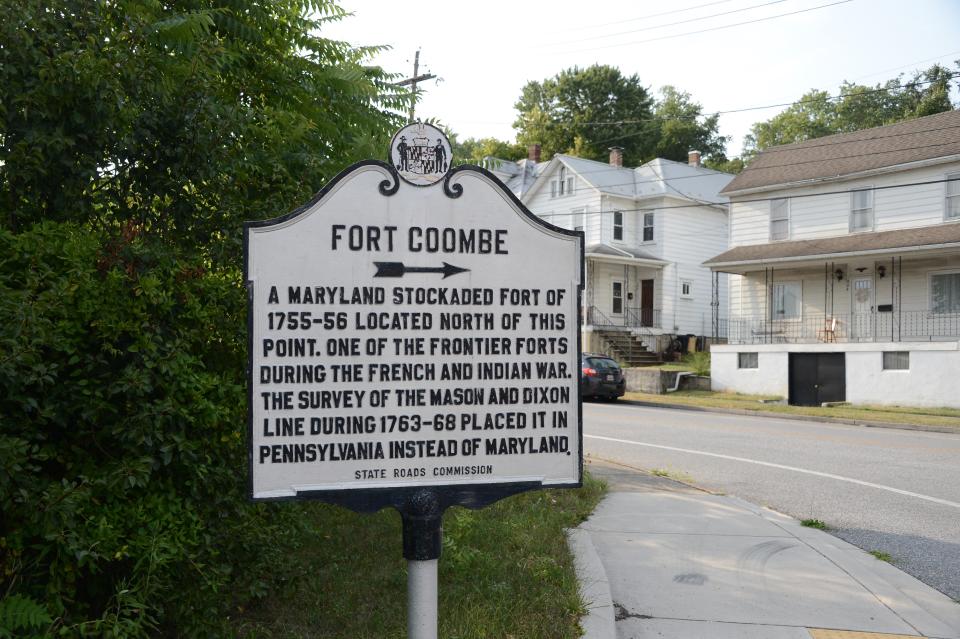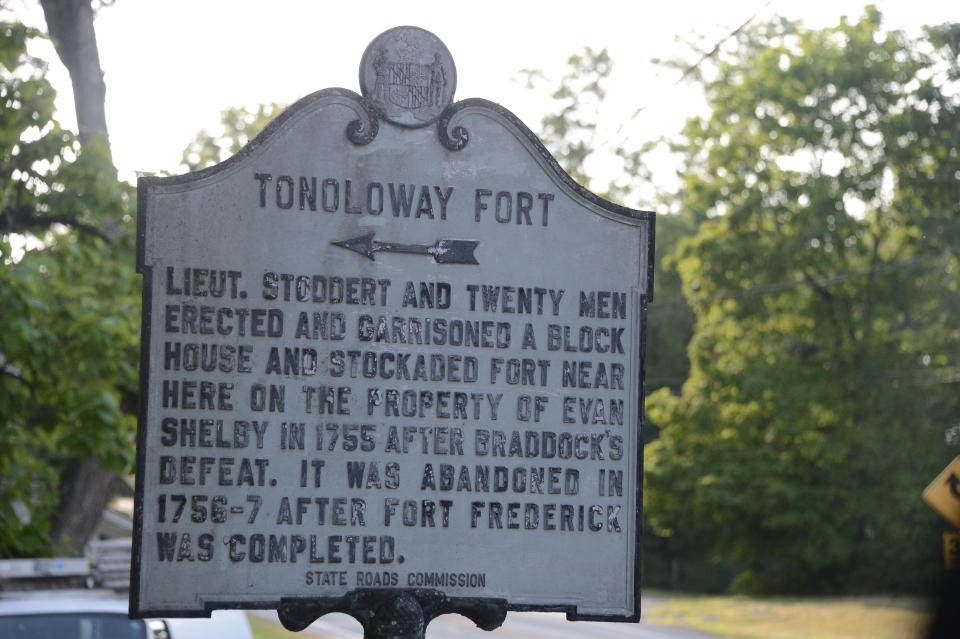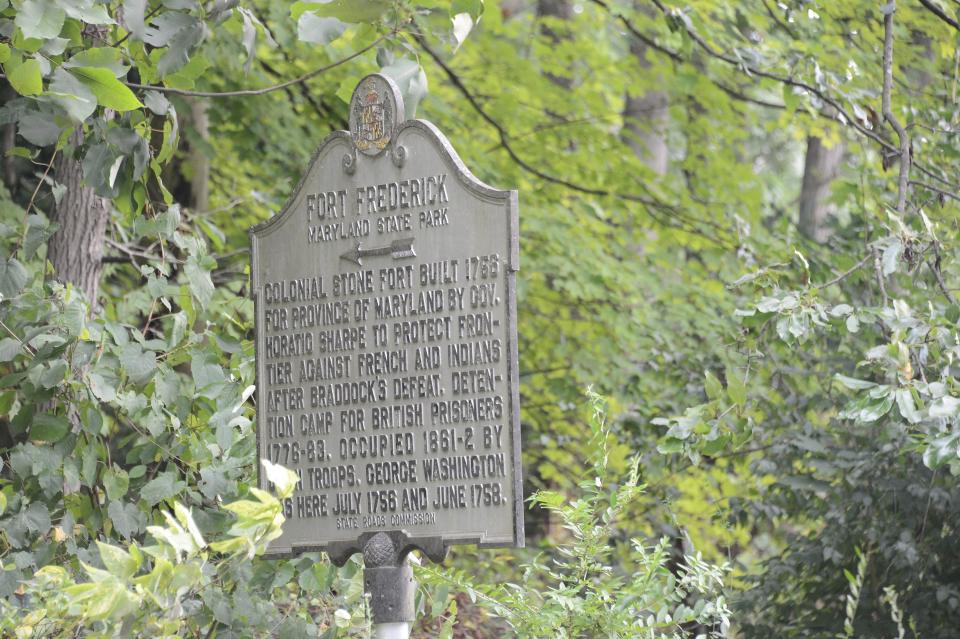Before Fort Frederick: A ring of small forts played a role in the French and Indian War
BIG POOL — Most people in Washington County have heard of Fort Frederick. But did you know that other French and Indian War-era forts once covered the area?
When making your way around Washington County, it's a common sight to see large Maryland historical marker signs. Some point to the general direction of forts that are now lost to time.
The French and Indian War was fought from 1753 to 1763 between French and British colonies, and both sides' Native American allies, over territory. The conflict was a part of the Seven Years' War, a larger conflict involving the great powers of Europe.
Fort Frederick served as a post for two companies of Maryland troops during the conflict, according to Fort Frederick histories.
But other forts around present-day Washington County were owned and operated by everyday colonists, according to Fort Frederick park ranger and historian Robert Ambrose.

The locations of these smaller forts are approximate and sometimes unknown, and their structures are either gone or rumored to be existing properties. But the historical marker signs allow passersby to consider the history of the area.
The definition of a fort is complicated, Ambrose said. Many people picture a large military camp with large walls blocking off intruders, but a fort can be as simple as a house with defenses.
Some people were paid by the colonial government to set up forts in their homes or on their property, but others set them up to safeguard their community, he said.
People went to the forts for safety, because their attackers looked for "soft targets", Ambrose said.
Because Fort Frederick was the only colonial fort until Fort Cumberland, Ambrose said these civilian forts were used as a bridge to communicate with other camps. Soldiers would walk to one fort, stay there for the night, and continue down the path to reach their destination.
These forts are called "frontier forts" on the historical markers. But Ambrose said this area of Maryland wasn't considered the frontier until the fighting started.
"People from the West started shifting East, running away," Ambrose said. "Fort Frederick becomes the frontier because of the war and because people have abandoned their farms".
Meanwhile, Ambrose said, there was a political battle between people in Western Maryland impacted heavily by the conflict and the government in the Eastern part of the state wanting to refrain from funding reinforcements.
So where were these little forts?
A historical marker in Hancock points toward where Fort Coombe once stood. The fort was built in Maryland, but ended up in Pennsylvania after the Mason-Dixon survey, according to the sign.

The fort was established in 1755 after British Gen. Edward Braddock's defeat at the Battle of the Monongahela. Fort Coombe was attacked by Natives multiple times from 1755 to 1756.
Maryland militia were stationed at Fort Coombe in 1755 and 1756. When Fort Frederick was built, troops would patrol between the two forts until Coombe was eventually abandoned by the military.
Killough, Shelby's, Baker's and Mills forts all were early forts built "on or near the North Mountain," according a report by Preservation Maryland. These structures were houses or stockade forts used to occasionally station troops and hold militia supplies.
Near Hancock is a marker denoting Fort Tonoloway, a block house and a stockaded fort built in 1755, according to the sign. Twenty men protected the fort and answered to Lt. Thomas Stoddert, according to displays at the Fort Frederick visitor's center.

Maryland Governor Horatio Sharpe ordered some of these forts to be built, including Fort Tonoloway, to strengthen Maryland's defenses.
"I would take proper measures to prevent the inroads and incursions of any French or Indian parties which I hope will be effectually done by the small forts that I have ordered to be built," the governor wrote, according to the displays at the visitor center. "In each of which I shall place a small garrison with orders to them to patrol from one to the other".
After gruesome massacres on the road to the fort, it was abandoned in 1756 when Fort Frederick was completed, according to the historical marker.
Eventually, the smaller forts all closed down around 1759.
When Pontiac's Rebellion — a conflict between Native tribes and the British — occurred in 1763, colonists from around the county fled to Fort Frederick, Ambrose said. This was only time the fort's doors were opened up to the public, he said.

Why is this history important?
Everyone should have at least some idea of their local history, Ambrose said, just to have a sense of place.
But these forts, he said, are important because they are stories about everyday people. They were an extension of daily life for the little guy that no one has heard about.
"These forts are not where major events happened ... but these are stories of people and what they did to survive and live on a daily basis," Ambrose said.
Adventure awaits at area state parks
This article originally appeared on The Herald-Mail: Historical markers hint at colonial forts before Fort Frederick

